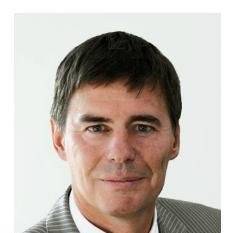What is a speech outline? Think of it as a blueprint for a successful speech or presentation. You wouldn’t start construction on a house or building without a blueprint and you shouldn’t build a speech or presentation without proper preparation. That means having a basic outline.

How do you write a speech outline?
How do you create a good speech outline? Although writing a speech outline might seem daunting at first, if you break the task into small steps, it can be easier than you think. And, when you start to look at the component parts of a speech or presentation, you realize that good speech craft is all about prioritizing your ideas, putting them in the right order and adding supporting detail.
In this post, I set out the steps that I follow when writing an effective outline that will lead to an effective speech or presentation. For the purposes of this post, I will assume that you know the topic and the audience.
The steps to writing a speech outline
Step 1 – Big Picture
Before you start writing your outline, it is important to step back and think about some big picture items.
First, think about the three cornerstones to your speech or presentation: the speaker (you); your subject; and your audience. Now, think about the relationships between these three cornerstones and make some notes about each. For example,
Speaker – Subject: What do you know about the subject? Why are you speaking about it? What expertise do you have? What insights can you share with the audience?
Audience – Subject: What does the audience know about the subject? Do they like the subject? Do they not like it? How is the subject relevant for the audience?
Speaker – Audience: What do you know about the people who will attend your presentation? What do they know about you? Do you have any ongoing relationship with them?
The purpose of this step is to get you to step back from the detail and think “big picture” about your speaking engagement.
Step 2 – Objective
What is your objective for the talk? What do you want people to do when have finished speaking?
People often tell me that they just want the audience to know something. The most powerful speeches and presentations are the ones that move people to action. If you can get people to take some concrete action, you will have made an impact.
When thinking about what you want the audience to do, be specific. For example, do you want them to increase your department’s budget or invest in your start-up or exercise three times a week? Write out your objective as follows:
“At the end of the presentation, the audience will ___________________ .”
Step 3 – Message
A speech or presentation should have a message, something that holds it together. The French call this le fil rouge – the red thread – that runs through the entirety of the presentation. People often try to pack in several messages but being too informative is not good; the result is often confusing for those listening. Of course, your message can have different parts, but it should have a single, unifying message.
Write the message of your speech in a single sentence. It must be a grammatically correct sentence, not a series of points. When you can distill your speech or presentation into a single sentence, the message will be clear in your mind. If you cannot, you need to spend more time thinking about the message. As Albert Einstein said, if you can’t explain something simply, you don’t understand it well enough.
When developing your speech outline in the steps below, use the message as a gauge for everything that goes into the speech. As you develop your talk, as you think about adding a slide, a statistic, a story, a chart, a graph, etc., ask yourself whether it supports the key message. If it does, it can stay. If it doesn’t, leave it out.
Step 4 – Relevance
A speech or presentation is never about the speaker or her product or service or company. It is always about the audience. When speakers put the audience first, that’s when great things happen.
Now that you have your message, list the reasons why your audience should care about your message. How is your message relevant to them?
You need at least one reason. If you can’t think of any, you have a problem. Either you are giving the wrong speech or you are speaking to the wrong audience. Go back to Step 3 and reconsider your message in light of Steps 1 and 2. Keep doing this until you can list one or more reasons why people should care about what you are saying.
Step 5 – Structure
Every speech or presentation needs structure in order for it to have an impact.
There are three basic parts to ever speech or presentation: the opening; the body; and the conclusion. For the purposes of this post, I will discuss them in that order. However, when working on your speech outline, I recommend starting with the body, then working on the opening and finally the conclusion.
(a) Opening
Your opening is the introduction to your presentation. You get one chance to make a good first impression, so you want your opening to be strong. Preparation is key. A strong opening has two parts.
(i) Hook
People’s attention is at its highest at the beginning of your presentation so you want to capitalize on it. Speakers who begin in a mundane fashion — “Good morning everyone. I’m happy to be here. My name is So-and-So and today we are going to talk about X” — often miss the opportunity to hook their audience’s attention.
There is no rule that says you have to begin with “Good morning” or something similar. There is no rule that introducing yourself has to be the first thing you do. And as for being happy, don’t say it. Show it in your smile and enthusiasm.
You can hook your audience’s attention from the outset in different ways. For example:
- Ask a rhetorical question
- Ask people to imagine something or recall a time in their lives when something happened
- Make a bold statement
- Tell an interesting fact
- Recite a quote
- Tell a story
Whatever you choose, be sure that it relates to the topic of your presentation. For your speech outline write down how you will immediately grab the audience’s attention.
(ii) Signpost
Once you have hooked them, you need to let people know where you are going with your presentation. Otherwise, the audience will get frustrated. Have you ever been in the audience and wondered: Where is he going with this? What’s her point? Like I said, it’s frustrating.
You need to signpost your talk. It doesn’t take much but it is a big help for your audience. It is a simple, informative statement of what the talk is about.
For example: “Today I want to share with you three reasons why we should open an office in southeast Asia: lower taxation; a skilled workforce; and market proximity.” Clearly, there is more to know about the proposal, but the sentence is a clear signpost to the audience as to what the presentation will be about.
(b) Body
The body of your presentation is where you develop your message in detail. This part represents the bulk of you presentation, so you need to give it some thought. Here’s how I go about it.
(i) Gather content
You need content for your presentation. Often, you can talk about many points in support of your message. Write them all down. Don’t edit your ideas yet. Write down everything that you could talk about, no matter how insignificant. Try to distill each idea into a word or short phrase.
When you have finished, your preparation should leave you with a sheet full of ideas. You are now ready for the next step.
(ii) Choose the most important points
Leonardo da Vinci said that simplicity is the ultimate sophistication. Too often, speakers fail to hit the mark because they try to cover too much information. People can only remember so much information. The more you add, the harder it will be for them to remember. Removing information will actually help them.
Of course, the number of points you cover will depend on how much time you have. You can cover more topics in a 30-minute presentation that you can in a 5-minute presentation.
Still, don’t try to talk about everything. What are the main points? Pick what is most important for this audience on this occasion and focus on that. You can always tell the audience that there is more to know but that you are only going to focus on a few ideas.
I know that leaving material out can be difficult, but you have to do it. Think for a moment about the complexity of the projects on which you are currently working. If you were asked to give a 20-minute presentation on any one of those projects, I’d bet that you could only cover a fraction of the detail related to it.
(iii) Order the points
Once you know the ideas you are going to discuss, you need to order them in a logical manner that supports your message. Depending on what you are talking about, you have different options. Here are five possible ways to order your content:
- Chronological (for example, the history of a company or product)
- Sequential (for example, a process or business plan)
- Climax (when trying to persuade the audience to do something; points arranged from the least important to the most important, thus building to a climax)
- Headline (also when trying to persuade the audience to do something but here, the points arranged from the most important to the least important; useful for a small audience of busy, senior, give-me-the-bottom-line-now people)
- Pros and Cons (when considering options)
Your ideas must be presented in a coherent manner so that they help people understand the reasoning behind your message.
(iv) Add supporting detail
Now that the ideas are in the right order, you want to add supporting detail for each one. Your ideas need to be supported if they are to be convincing.
Examples of supporting detail include data, charts and graphs, stories, quotes, authoritative sources, visuals, metaphors, demonstrations and more. A good presentation will have a variety of supporting material. That is why this part of the process takes a fair bit of preparation.
For each of your main points, list the things that you will use to support that point. If you are going to use slides as part of the presentation, you can even sketch out a rough idea as to what each slide will contain.
(v) Transitions
Transitions in a presentation do not make up a large part of a presentation, but they are important. Too often, the different points in a presentation blend into each other like the compartments on a train. This makes it more challenging for the audience to follow.
It is important to leave enough space between two ideas so that the audience understands that you are moving onto a new point. Just as you need to signpost what your talk is about in the opening, you also need to signal when you are moving on to a new point in your talk.
A transition can be a simple statement. For example, “The next point is …” or “Another reason in support is …” or “Now that we’ve discussed X, let’s look at Y …”. Any of these will suffice. But a simple statement will allow the audience to shift gears mentally and get ready for the next idea.
On your speech outline, make a note about how each section of the body links to the following section.
(c) Conclusion
You want to finish on a strong note. Too many people waste their conclusions with a weak “Thank you” and exit the stage. You have to resist that urge and maximize your conclusion. You can plan for it in your speech outline.

(i) Transition to conclusion
Plan how you will transition from the final point in the body of your presentation to the conclusion. It should send a clear signal to the audience that you are nearing the end. One way is to link your conclusion to your opening.
(ii) Link to opening
Most people think of a presentation as something that is linear but I like to think of it as something that is circular. In other words, you link your conclusion to your opening.

Thus, for example, if you began with a story, you could finish the story; if you began with a quote, you could come back to the quote; if you told an interesting fact, you could reiterate it (and perhaps add another interesting fact).
Linking your conclusion to the opening is not necessary, but it always adds a nice polish to your presentation and signals to your audience that you are approaching the end. In your speech outline, write down how you might link your conclusion to your opening.
(iii) Repeat and summarize message
Repeating your message as a simple statement will reinforce it in the mind of your audience. Succinctly summarize the different points in support, in the same order in which you presented them in the body of your talk.
(iv) Call to action
As discussed in Step 2 (Objective), the most powerful presentations are the ones that move the audience to take some kind of action. Now is the time to leave the audience with your call to action.
If your call to action is a big one, have a simple first step that they can take. Studies show that if you can get people to take a small step towards a larger goal, the chances of them reaching that goal are greatly increased.
One example of a first step that I have used with a few clients is to have them insert a slide at the end of the deck with a QR code on it. The code links to a website where the audience can learn more about the topic and perhaps download PDF document. It is a simple and effective way to start moving your audience toward your objective.
Final thoughts
When you give a presentation, it is your job to get the audience across the metaphorical bridge that separates them from your idea. How do you do that? It all starts with the preparation of a good speech outline.
How do you write a speech outline? One step at a time.























15 Replies to “How to write a speech outline”
Excellent, clear and concise overview — thank you, John! For me, including a clear call to action is my weakest point. I will definitely work on that. (I think it’s very much linked to self-confidence: “Who am I to suggest a call to action to you, audience members?” Is this a gender issue, to some extent, I wonder? I’d love to hear from other women speakers about this point. Or any observations from you as a mentor/coach/trainer, John?)
Thank you very much, Merryl. I am glad that you enjoyed the post. I understand your point about the call to action. I know that some women struggle with it, but I also know men who struggle with it as well. There is, as you say, this feeling of “Who am I to tell you what to do?” but then again, who aren’t you to tell me? At the end of the day, I will decide whether to agree with you or not. But if you don’t sound invested, the chances that I will be invested are diminished. In this regard, this post, and the wonderful video in it, about speaking with conviction might help. Good luck with your speeches and presentations!
Excellent. This one a definite keeper!
Hugs
Mom
Thanks, Mom. Much appreciated.
Delighted to see a mention of the Red Thread here. It’s the backbone of a great talk, but often the hardest thing for people to find (and thus why I wanted to figure out a way to help people find it).
Great suggestions here for how to build a talk from there — thank you.
Thanks a lot John I will use it today for a strategy presentation. 😉
Good luck with the presentation, Michel!
Gems! Love the questions about how much the audience likes the subject – great way to see it from their viewpoint.
Also love your point about getting people to take a small, easy step, to get the ball rolling.
That’s actually the last piece of a 3-part model I use for getting listeners to act:
1. Announce your call-to-action (A)
2. Convince people to own it (C)
3. Transform it into steps (T)
It’s as if you build a bridge between your call-to-action and your listeners’ everyday lives. (See the link for some sample techniques.)
Great post, John. A little longer, but well worth the read!
Thanks, Craig. “ACT” is a great acronym for getting people to … act. I also like the metaphor of a bridge. I often say that your audience is on one side of the river and you want to get them to see things from your side. To do that, you have to build a bridge that allows them to cross over.
Great info, thanks !
Thanks, Hector.
Thank you for sharing that consistent and concise methode on how to outline a speech which is extremeley helpful. I will certainly apply that approach in planning my speeches.
I am glad that you found it helpful, Günther. Thanks for letting me know.
Excellent post: simple, to the point, easy-to-follow, compelling. Like a speech! 🙂
Thank you for summing it up in a neat package, John!
Thank you, Lisa Marie.
Comments are closed.